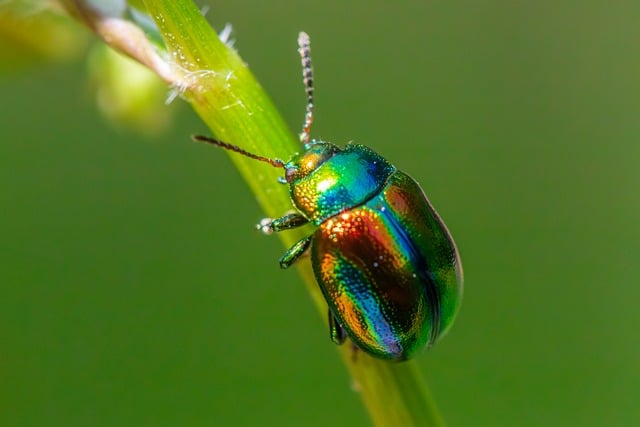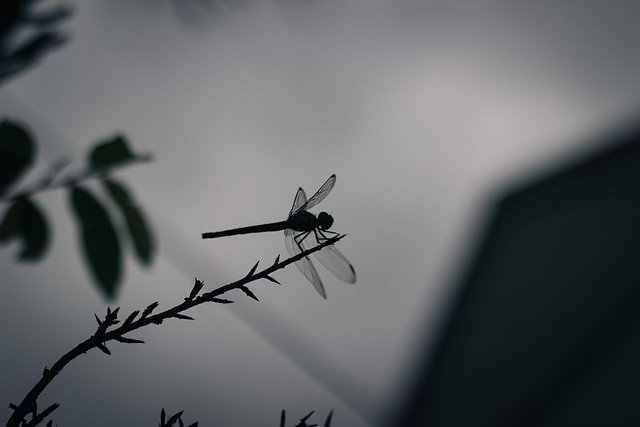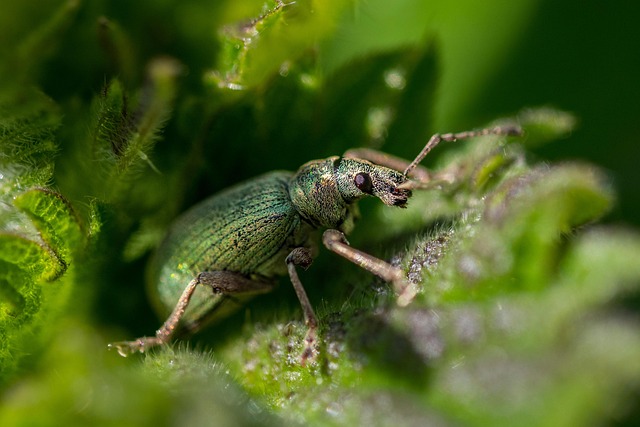The Emerald Ash Borer (EAB), an invasive beetle, threatens ash tree populations in Greenwood Village, causing nutrient disruption and water transport issues. Early detection through visual cues like D-shaped bark holes is vital. Effective treatment includes biological controls, tree banding, and targeted insecticides for preservation of affected trees. Wildlife trapping offers a humane pest control method for urban areas, focusing on specific species without harming non-targets or the environment. Greenwood Village employs integrated strategies, combining chemical insecticides with sustainable methods, for long-term EAB management, preserving green spaces and ecological balance.
In Greenwood Village, the presence of the Emerald Ash Borer (EAB) poses a significant threat to local ash trees. This invasive beetle has caused widespread damage across the region, necessitating effective treatment strategies. Beyond traditional methods, wildlife trapping emerges as a non-toxic, targeted approach for pest control. This article explores understanding EAB, its impact, and identification in Greenwood Village, while delving into innovative trapping techniques and effective treatment options to protect the community’s green spaces.
- Understanding the Emerald Ash Borer: Impact and Identification in Greenwood Village
- Wildlife Trapping: A Non-Toxic, Targeted Approach for Pest Control
- Effective Treatment Strategies: Protecting Greenwood Village's Green Spaces
Understanding the Emerald Ash Borer: Impact and Identification in Greenwood Village

The Emerald Ash Borer (EAB) is an invasive beetle that has caused significant damage to ash tree populations across North America, including Greenwood Village. This destructive pest introduces a bacteria into the trees, disrupting their ability to transport water and nutrients, ultimately leading to their decline and death. The EAB’s lifecycle includes larvae that feed on the inner bark of ash trees, creating intricate tunnels that disrupt the tree’s vital functions.
Identifying an Emerald Ash Borer infestation is crucial for effective treatment in Greenwood Village. Signs include the presence of D-shaped exit holes in the bark, as well as small sawdust-like material (frass) accumulating at the base of the tree. Trees may also exhibit yellow or brown leaf discoloration and irregular branch growth patterns. Early detection is key, as prompt action can help preserve affected ash trees through various treatment methods, including biological controls, tree banding, and targeted insecticide applications.
Wildlife Trapping: A Non-Toxic, Targeted Approach for Pest Control

Wildlife trapping offers a sophisticated and targeted method for pest control, especially in urban areas like Greenwood Village where managing invasive species is crucial. Unlike traditional methods that can be destructive or toxic, this approach focuses on capturing specific wildlife without causing harm to non-target species or the environment. For instance, when dealing with the emerald ash borer—a significant pest in many communities—wildlife trappers employ specialized equipment and techniques to capture these beetles effectively while minimizing ecological impact.
This method is particularly valuable for controlling pests like the emerald ash borer without resorting to pesticides or other chemical treatments. By using non-toxic methods, wildlife trapping ensures the safety of local ecosystems and maintains biodiversity. It also provides a humane solution, allowing captured animals to be released back into the wild if they’re not causing damage, or relocated to suitable habitats.
Effective Treatment Strategies: Protecting Greenwood Village's Green Spaces

In Greenwood Village, effective pest control wildlife trapping services are crucial for protecting the area’s green spaces and maintaining a balanced ecosystem. One notable concern is the emerald ash borer (EAB), an invasive beetle that has caused significant damage to ash trees across the region. To combat this threat, targeted treatment strategies are implemented. These include the use of chemical insecticides, which, when applied correctly, can effectively control EAB populations and prevent further tree loss. However, as a sustainable approach, many services now favor biological control methods, such as introducing natural predators or utilizing parasitic wasps, to ensure long-term protection for Greenwood Village’s beloved ash trees and diverse green spaces.
Regular monitoring and early detection are also vital elements in the battle against EAB. Trained professionals conduct thorough inspections, enabling them to identify signs of infestation promptly. This allows for swift action, which is critical in minimizing tree damage and saving valuable ash trees. By combining these strategies, Greenwood Village’s green spaces can be protected, preserving the area’s natural beauty and ecological balance while ensuring a safe environment for both residents and wildlife.
In conclusion, addressing the Emerald Ash Borer issue in Greenwood Village requires a multifaceted approach. By understanding the impact and identifying the pest, we can effectively utilize non-toxic wildlife trapping methods as a targeted pest control strategy. This, coupled with appropriate treatment plans, ensures the protection of the village’s green spaces while promoting an eco-friendly environment. Implement these measures to safeguard Greenwood Village from the Emerald Ash Borer and preserve its natural beauty for future generations.
